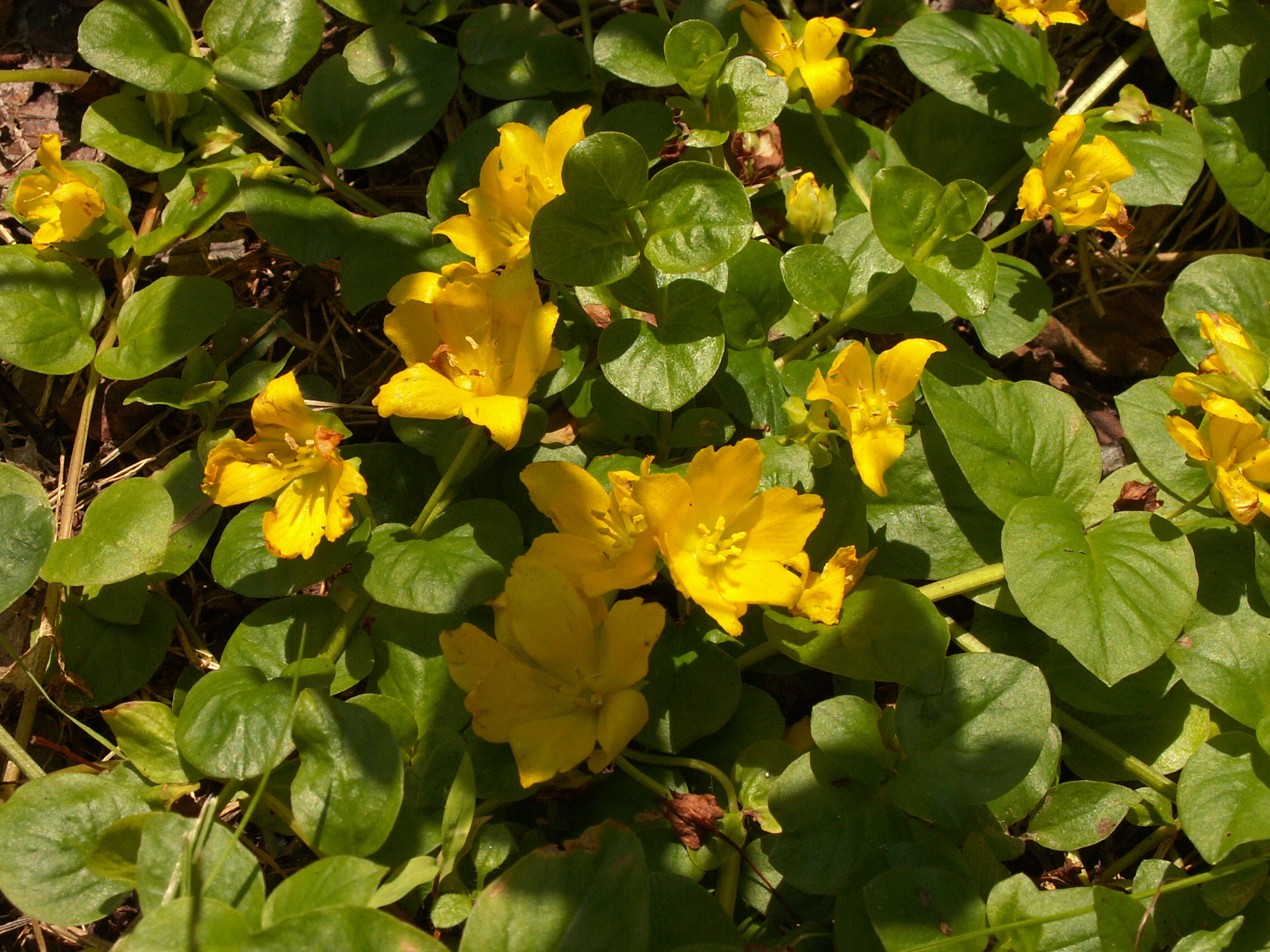
Also called Moneywort, from the rounded leaves. A garden creeper that can be invasive when it escapes the garden; these patches were blooming in Salamander Park, Fox Chapel, in early June. The plant looks a little like Lesser Celandine, but blooms long after the Lesser Celandine has vanished. Note the creeping stems with short-petioled, opposite roundish heart-shaped leaves and the five-petaled flowers.

Gray describes the genus and the species, which he puts in the Lysimastrum section of the genus:
LYSIMÀCHIA [Tourn.] L. LOOSESTRIFE. Calyx 5-6-parted. Corolla rotate, the divisions entire, convolute in bud. Filaments commonly monadelphous at base; anthers oblong or oval. Capsule few-several-seeded. — Leafy-stemmed perennials, with herbage commonly glandular-dotted. (In honor of King Lysimachus, or from lysis, a release from, and mache, strife.)
LYSIMASTRUM Duby. Corolla yellow, rotate, very deeply parted, and with no teeth between the lobes; stamens more or less monadelphous, often unequal; leaves opposite or whorled, or some abnormally alternate.
Flowers 2-3 cm. broad, solitary in the axils of ordinary leaves; corolla not dark-dotted nor streaked; filaments slightly monadelphous.
L. nummularia L. (Moneywort.) Smooth; stems trailing and creeping; leaves roundish, small, short-petioled; divisions of the corolla broadly ovate, obtuse, longer than the lance-ovate calyx-lobes and stamens. — Escaped from gardens into damp ground in some places. June-Aug. (Introd. from Eu.)

